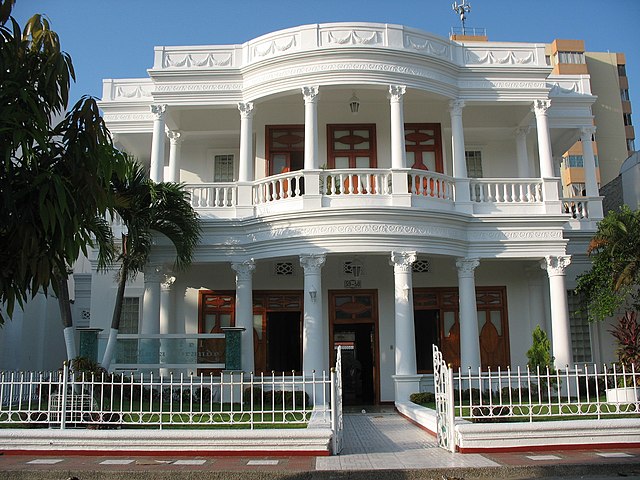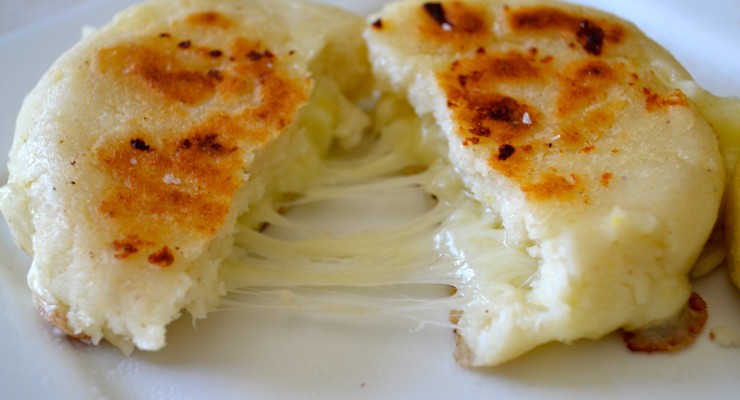
Discovering what truly nourishes you (Barranquilla, Colombia and Brooklyn, NY; recently and ten years ago, with thirty years of memories): “Caminito was the start and ending of this story” is a telling opening line from The Waves Take You Home.
Which takes you by surprise. Not what you might expect from a contemporary novel set in Colombia: a Latin American country besieged by drug trafficking, crime, violence, impoverishment, and people increasingly risking their lives to cross into our US borders.
Not a novel straight out of the news. A novel straight from the heart of María Alejandra Barrios Vélez, who lived by the Caribbean Sea in northern Colombia. Her hometown Barranquilla, where you’ll discover a restaurant you will not forget, Caminito. A place where lives have been built around, sacrificed for. Where the main character, Violet or Vi, never wanted to leave.

via Wikimedia Commons
A Caribbean coastal region where the waves come from. Where the title signals the author’s intent to take the reader to a place she knows but we likely don’t. Where a restaurant is at the center of Vi’s life, until she was eighteen. Pushed to migrate to America, not by choice but by emotional anguish, out of respect for and obedience to the strong woman who raised her and owns Caminito: Emilia, her Abuela, Spanish for grandmother. She wanted Vi to have the freedom to choose what she wanted her life to be, rather than tied down to a kitchen Vi was intentionally not allowed in. Her destiny already planned, unbeknownst to her.
Breaking the cycle of generations of women without choices in one family also meant breaking apart Vi’s young love with the Lebanese son of a butcher who dreamed of becoming a doctor, Rafa. The one who “dreamed harder than anyone” and “held on to the ones he loved.”
Caminito isn’t just a restaurant. It’s an “institution” in the El Prado neighborhood, where a tropical climate fuels more heat to this heart-filled and heart-aching story to save a restaurant. Caminito has a long, colorful history like its once elegant neighborhood, depicting “styles brought by German immigrants, Italians, Syrians, Jews and Lebanese.”

via Wikimedia Commons
Caminito is connected by a path to Vi’s family’s home, but no one spends much time in it. You’ve probably been to a family restaurant like this one: the proprietor’s young children sitting around one of the tables obediently doing their homework, coloring in notebooks, hearing laughter and loud conversations, relishing the food, like the special recipes created by Emilia – Colombian Spanish dishes and foods from the local cuisines – beloved over its thirty-year history.
Vi and an orphaned boy Anton, whom Emilia took under her wings, wouldn’t be seated together at that table. He’d be in the kitchen learning how to cook alongside Emilia. Vi would be the one at the table, taking in the “rhythm of the restaurant” while coloring. The lyrical prose befitting.
Unlikely you’d see Vi’s flamboyant Mamá Paula, since she’s barely around, popping in but mostly disappearing. Their relationship has been quite strained, caught up in a bitter pattern of a mother’s criticism. Not that Emilia is touchy-feely either with her tough love approach, but she was always there for Vi, not like her own daughter, the “tropical queen of ice.”
Early chapters fast-forward to Vi at twenty-eight, when she’s graduated from a college in Vermont majoring in art working as a struggling freelance illustrator in NYC, living the past four years with Liam, an architect, in Brooklyn, where Veléz now lives. Gig artists in a city that’s one of the centers of the art world adds another dimension.
Magical realism takes the story to an entirely different realm, after Vi learns her Abuela has passed away and feels she must leave to help Caminito having also learned it’s on the brink of financial disaster.
Emilia hasn’t finished her time on earth. A believer in Colombian folklore, in ghosts, like Latin American writers, among them Gabriel Garcia Márquez, considered a “founding father” of the magical realism genre. Vi is the only one who feels Emilia’s ghostly “cold air” presence, sees and talks with her, since she will not settle down until Vi’s life is settled.
What V encounters takes her “complicated” view of home to another level too. One of the novel’s searing questions is: How do you know where you really belong? A different take on the concept of belongingness – one culture ingrained in her, another she hopes will be.
This story is about far more than saving a restaurant, when the odds are stacked against you. When everyone must step in including the community, yet it’s still not enough. Esprit de corps jumps off the pages. Caminito represents joy, heartbreak, tradition, community, pride, resilience, and conquering “love over fear.” In Vélez’s bona fide hands, it’s deeply passionate, emotional, and awfully romantic.
This kitchen is HOT, with the burdens and conflicts of responsibilities to one’s family. Hotter when you add in the ingredients for competing forces of love – one rooted in the soul, the other newer roots. One more intense, the other easier, safer. Liam wraps Vi in love so the city can feel like home; Rafa will always mean home. If you’re blessed with the love of two good men, how do you decide which one to let go of?
Authenticity also comes from the language of the people. Much discernible or translated, but not all the tempting dishes. Too many to name. Below are images of two, one satisfying the sweet tooth, the other comforting – pastel de gloria and arepas. Food, a deep part of the culture. “Creativity mixed with dignity.”

via Wikimedia Commons

via Wikimedia Commons
One the novel’s mysteries is why Emilia bequeathed Vi the largest share of the restaurant when all she wanted was for her to have nothing to do with it?
Liam says he’ll do anything for Vi, but can he? White and from a wealthy family, can he truly understand what Caminito and Vi’s slice of Colombia mean to her? What it means to be an immigrant in America? Who’s a woman of color? They’re happy in their Brooklyn cocoon, but what happens when the protective shell is broken and Vi returns to Colombia to save Caminito?
How do you decide when to stay or go? El Prado may be “stuck in time,” but should Vi be?
Lorraine